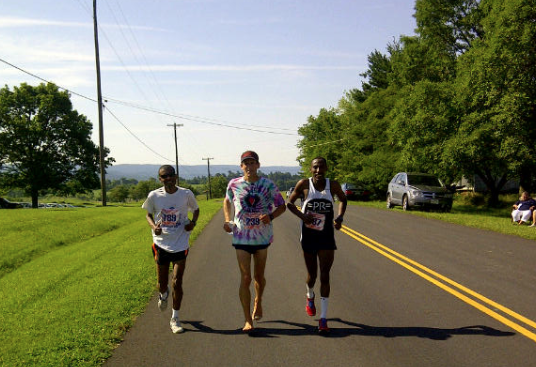
***
One of my favorite places to run is Antietam National Battlefield Park, which is the site of the bloodiest one-day battle in American history. Over 20,000 soldiers were killed, wounded or missing after twelve hours of fierce combat on September 17, 1862. The Battle of Antietam ended the Confederate Army of Northern Virginia’s first invasion into the North and led to Abraham Lincoln’s issuance of the preliminary Emancipation Proclamation.
The Battlefield Park is only a few miles from my home in Shepherdstown, West Virginia, and is a beautiful mix of trails and traffic-free roads. The landscape of the Battlefield and the surrounding wider region is protected to look as it did 150 years ago; it’s a great model of community and National Park Service preservation. One feels the weight of history here despite the passage of time.
Each year, the Park host its Annual Run Through History 10K Race and 5K. On June 2, 2012, I showed up with about 4oo other runners for the 33rd annual race. The steep, rolling hills always make the event a challenge.
I decided to race barefoot. And why not? In April 2011, I had filmed my first barefoot running video here. And since I had been traveling the previous week, my legs and body didn’t feel all that sharp. So running barefoot would take the pressure off wanting to “race.” I was here to have fun amid some talented local runners.
I got a few strange looks at the start of the 10K in my bare feet, but many of the runners here know me and the conversations are always friendly. I started the race with my friend Tim Schuler of Pennsylvania. Tim is another strong Masters runner, and he just ran a competitive 2:49 at Boston this this year in the heat. He had also just run the 5K earlier in the morning and was coming back for a second run.
I started the race relaxed, stayed relaxed, and finished relaxed. When you run barefoot you can only relax as your feet regulate your effort. You cannot run too hard.
An elite Ethiopian runner, Gurmessa Megressa, who has retired from the U.S. road racing circuit and is now living on Washington, D.C. won in 33:38. I finished 5th in 36:48 and almost chased down his compatriot Kumsa Ethicha. Megressa won $400 for his efforts. And I pocketed $100 for being the top masters.
I enjoyed a nice warm down with my two new Ethiopian friends after the race. Running barefoot eliminated all cultural barriers between us. They looked at my feet and smiled, as they had run barefoot through childhood. They, of course, raced in running shoes, but both had the beautiful springy form of East Africans.
We have all evolved to run in the same way and we find joy in the moment.

Great story. Keep it up Dr. Mark.
Mark–my wife and I visited Antietam the same weekend last November when we wandered into Two Rivers Treads. Both life-changing experiences, though for different reasons.
Richard
Richard,
thank you for visiting our store and town! Run healthy.
Mark
Dear Dr. Mark,
Keep it up! I find you to be a role model athletically, professionally and personally.
I met your residency colleague Dr. Belsky at a medical conference today and your name came up as we talked about running and residency and the Vivobarefoot shoes that I was wearing.
Charlie
Charlie, thank you for the kind comments. Keep spreading the good word on all this in the medical community. Hi Deb 🙂
Mark
Hey Mark,
Not sure of the best place to ask you a question, but I thought this might get to you. I live in Vermont and so my normal running routes include lots of climbing and descending. Climbs work out fine and descents that are not too steep are really fun. However trails here often exceed 10% climb/descent and I feel not too confident about keeping myself injury free when descending. (I usually experience some IT band soreness afterward.) Any thoughts on how to run downhill?
Thanks,
Mark
Mark,
when running down you really need to shorten the stride and develop and strong and quick elastic running pattern. run over the ground and not into it. keep balanced and land close to under your center of mass. tough to explain in writing.
Mark